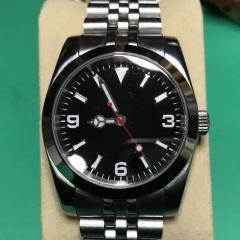Doxa women's watch (radioactive)
-
Recently Browsing
- No registered users viewing this page.
-
Topics
-
Posts
-
I appreciate that! I'm definetly not feeling an out of place right here 🙂 (too many Andy in this conversation 🤣🤣)
-
By Neverenoughwatches · Posted
I'm here for you Andy, us outcasts 😥 need to stick together ♥️ -
Likely ‘cos you know more than most of us do Andy, as well as an amazing ability to find detailed information that I for one am envious of. Tom p.s. Do you feel loved now? 😂
-
By Neverenoughwatches · Posted
Tools are very subjective Andrea, it comes down to what feels right for you. My most used pair, 70 % of everything I do,cost only a few pound. But they bear no resemblance to look or feel now of how they were manufactured. I feel your pain brother ♥️
-




Recommended Posts
Join the conversation
You can post now and register later. If you have an account, sign in now to post with your account.
Note: Your post will require moderator approval before it will be visible.